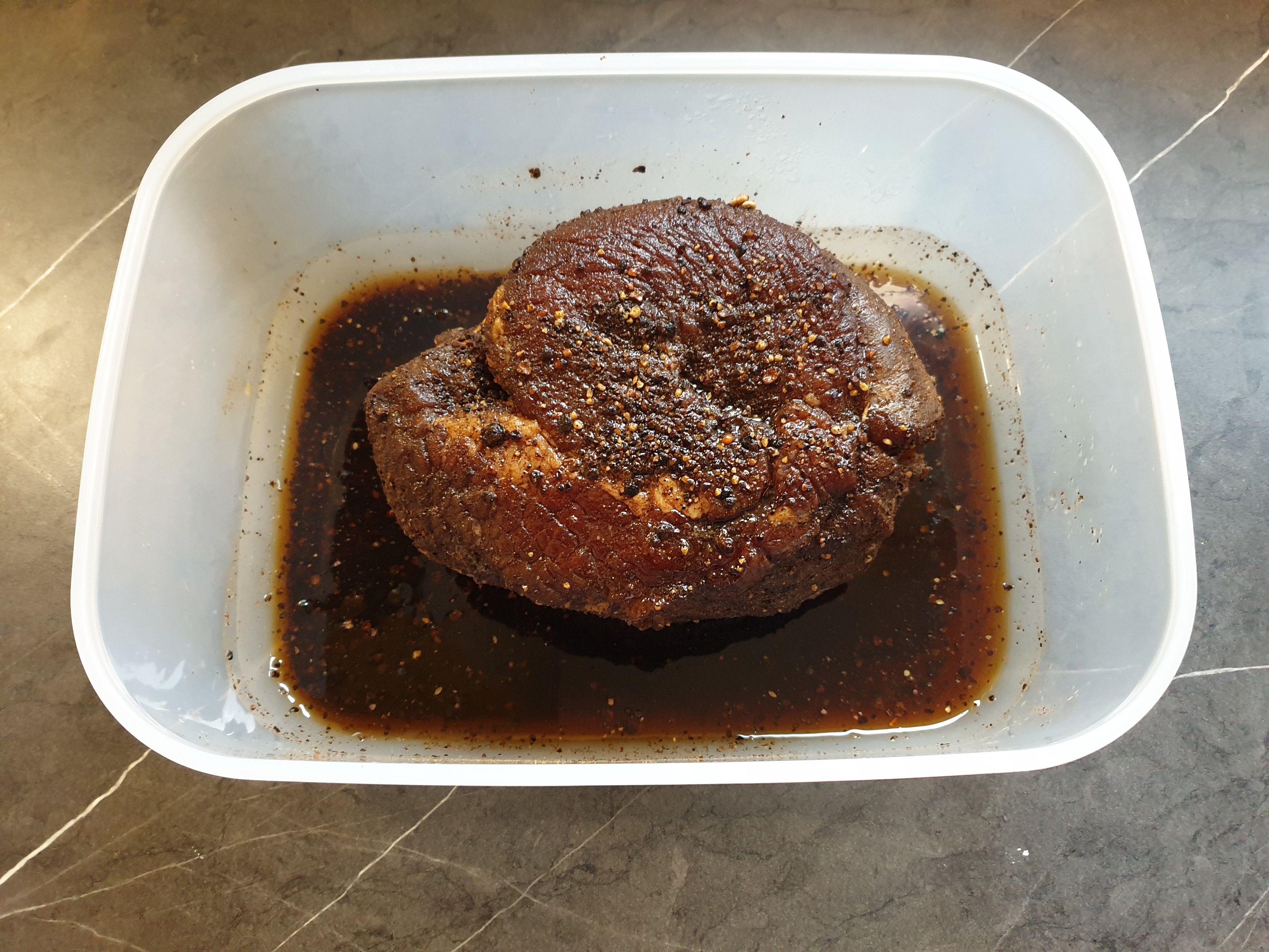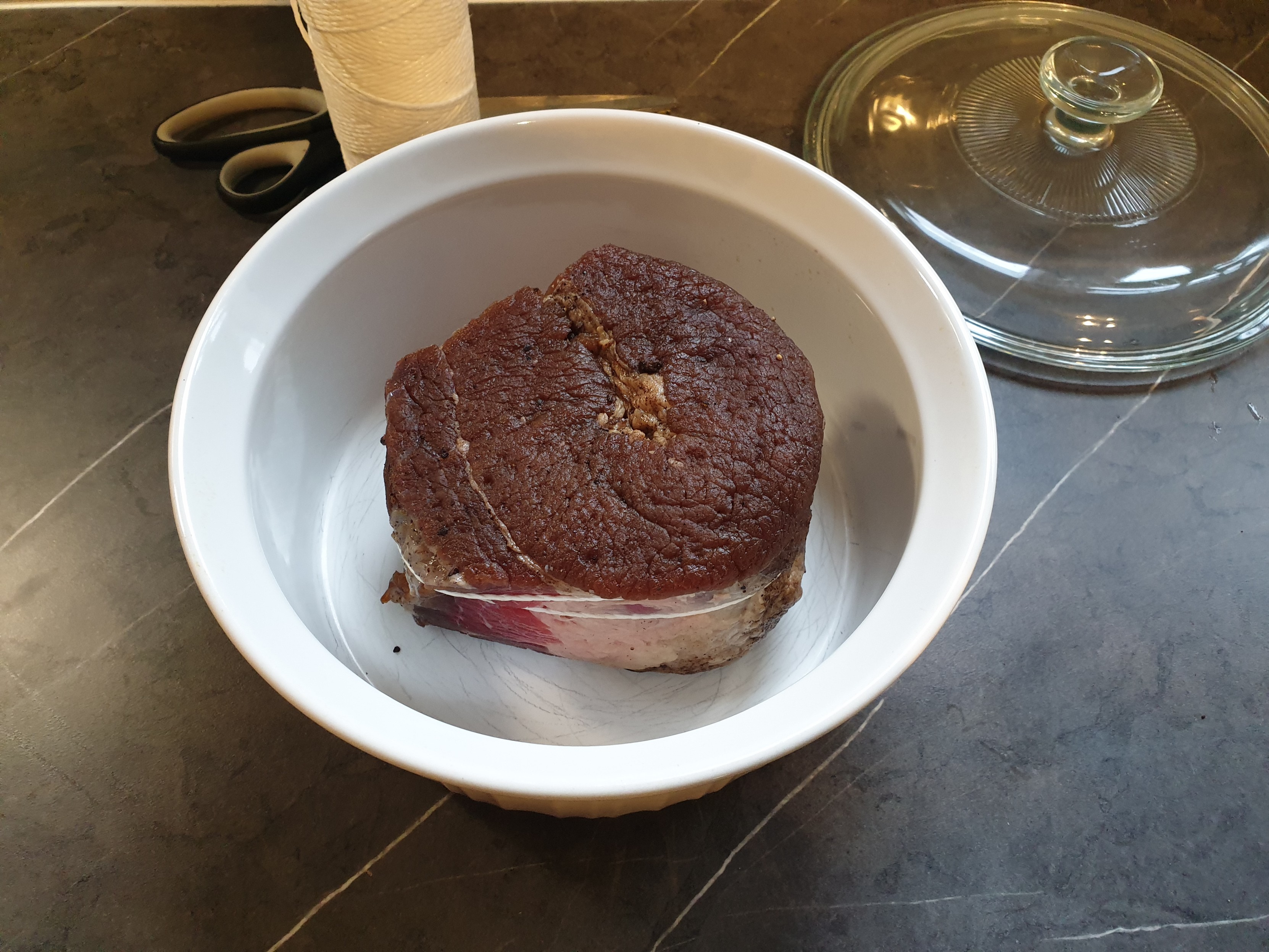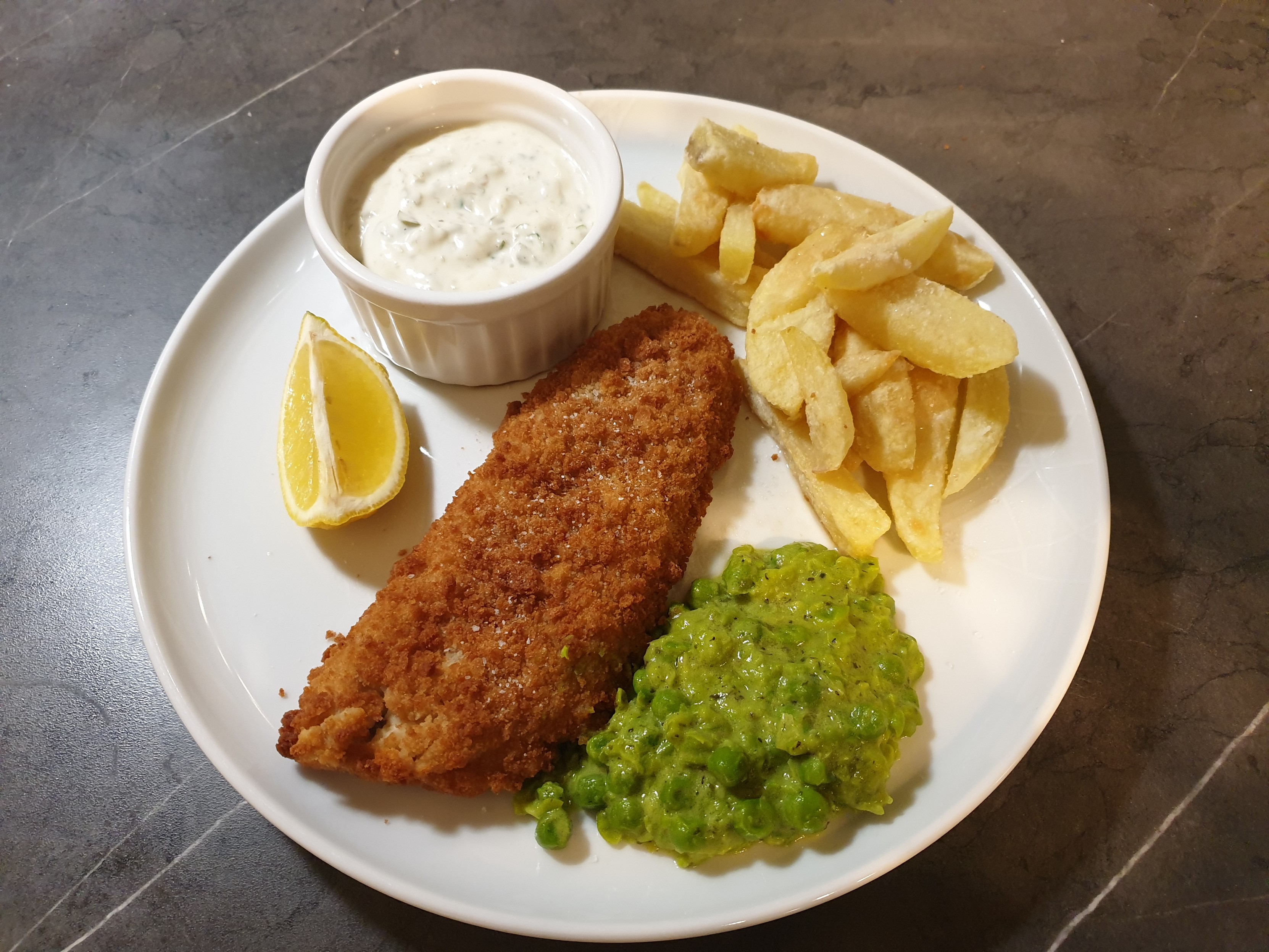Okay, kicking off my "traditional" British meals series with an obvious one - Friday night Fish and Chips, with homemade tartar sauce and mushy peas.
-
Brett Sheffield (he/him)replied to NeonSnake on last edited by
@neonsnake that looks amazing.
-
Fish and chips is, of course, considered to be a classic "British" dish.
It's probably not as popular today as it once was, but it used to be a pretty common Friday night takeaway dish.
The history is fuzzy - a lot of British dishes are - but the generally accepted consensus is that fried fish was introduced to the British Isles by Jewish immigrants, who would cook "battered" or "breaded" fish on a Friday, and eat it again on the Saturday (Sabbath), as the batter or breading would mean it would stay fresh.
It was then, in turn, adopted by Christians who don't eat meat on Friday, so it became a Friday night dish. There's a little more to it than that, in as much as it was cheap and easy to make/transport during the Industrial Revolution (with advances in speed of transport), so it became a widely consumed food amongst the working classes - it's not only easy to transport, but it's an easy to "package" food - think of the newspaper cones filled with fish and chips.
(Tartar sauce is - again, a classic accompaniment, but is French)
Somewhat tragically, it's now become a gentrified dish - I've just checked the pricing for my local fish and chip shop, and I'd be looking at about £25 for two portions of breaded haddock, a large chips, and mushy peas, vs the £5-£6 or so I spent on the same dish last night for two people.
Recipes below for all of the individual components.
Breaded Haddock
Breaded Haddock Ingredients 2 haddock fillets 2 tbsp plain flour, seasoned with salt and pepper 1 egg, beaten 50g breadcrumbs Directions Pre-heat oven to 180c Pour the flour, egg, and breadcrumbs into 3 separate bowls. Dredge each of the haddock fillets first in the flour, then the egg, an...
Google Docs (docs.google.com)
Oven Chips
Oven Chips Ingredients 450g floury potatoes (Maris Piper, Rooster, King Edward etc) 1 tsp cornflour Neutral-flavoured cooking oil (eg. canola) Salt Directions Peel the potatoes and cut into chunky chips - approx 2cm by 1 cm. Preheat oven to 180c, or preheat airfryer if using. Bring a pan of w...
Google Docs (docs.google.com)
Mushy Peas
Mushy Peas Ingredients 150g frozen petit pois 25g leeks (or shallots), roughly chopped 50g butter 1/4 tsp sugar 100ml light vegetable stock 1/2 tsp dried mint leaves Directions Cook the peas for 3 minutes or until just tender, then drain and shock with cold water to prevent further cooking Melt...
Google Docs (docs.google.com)
Tartar Sauce
Tartar Sauce Ingredients 25g cornichons, chopped finely 25g capers, chopped finely 1 tbsp parsley, chopped finely 70ml mayonnaise 1/2 lemon, juiced salt and pepper Directions Mix the cornichons, capers, and parsley into the mayonnaise Season with the lemon juice and salt/pepper to taste - taste...
Google Docs (docs.google.com)


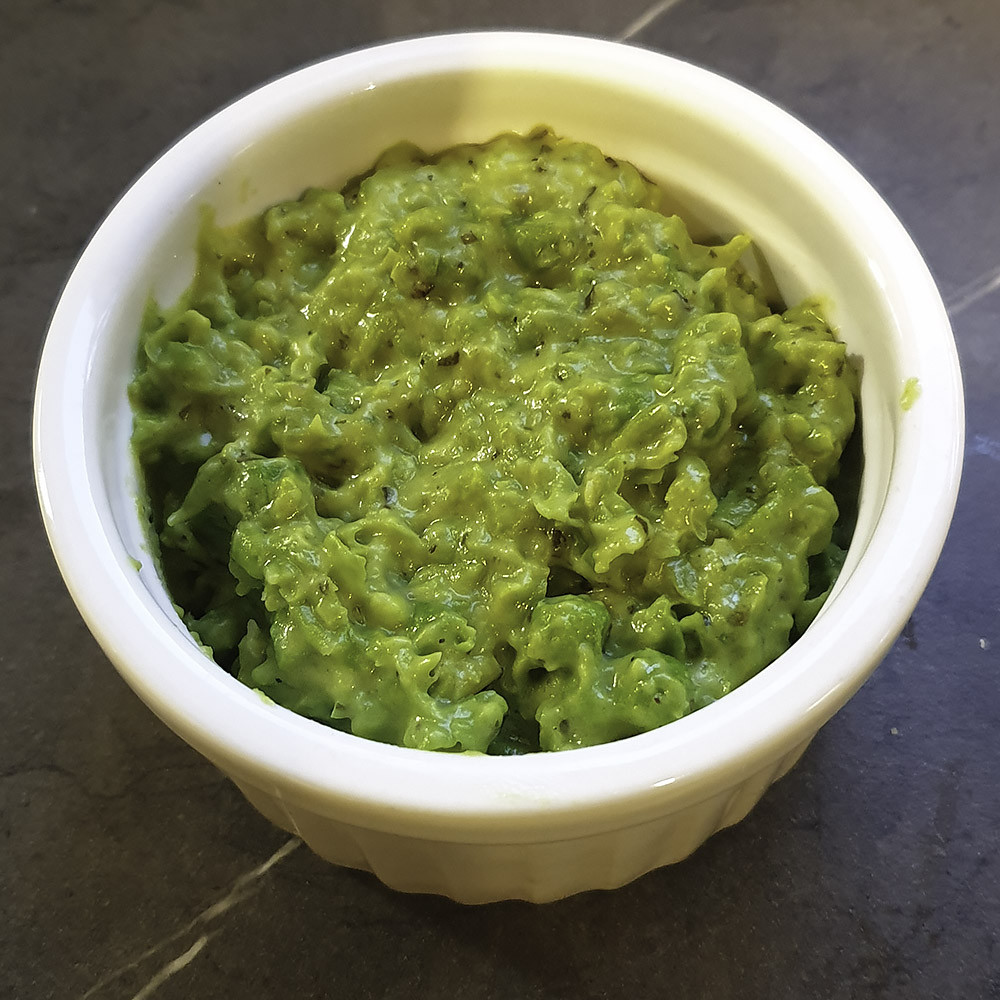
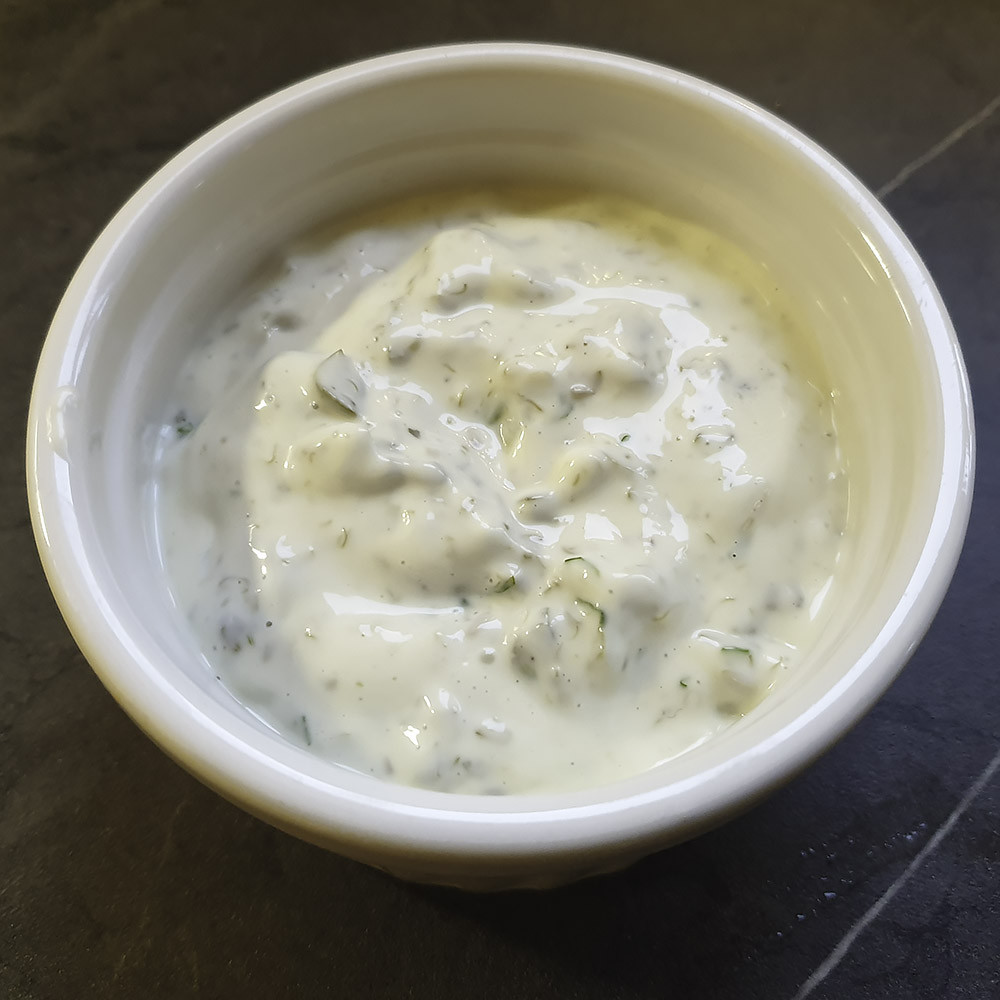
-
Today I will be making Roast Beef with Yorkshire Puddings.
As "Classic British Recipes" go, this has to be up there, after all.
The "Sunday Roast", traditionally, has it's roots in *exactly* what you'd imagine, there's nothing mysterious or esoteric about it: you put a decent-sized piece of meat in the oven before going to church, and then you prepare the sides when you get home.
Sunday Roast, stereotypically, would be an extended family thing - after church, you'd go to a relative's or friend's house for dinner. Rarely (again, "stereotypically") would it be a one-family thing. I feel this is no longer true, as people have become more atomised.
The choice of accompanying vegetables and sauces also has it's roots in tradition, revolving around what was seasonally available.
I'm making beef today, so the accompaniments - by tradition - should be Yorkshire Puddings, swede and carrot mash, a cruciferous vegetable such as cabbage, kale or broccoli. The traditional "tracklement*" for roast beef is horseradish sauce.
Roast potatoes, of course, are standard fare with all Sunday Roasts, as is gravy, both of which I'll be making separately.
----
*"tracklements" are the condiment you serve alongside cooked meats- normally used for chutneys and such, but colloquially used for mustard, cranberry sauce, bread sauce etc)
-
I've spoken at length about British Roast Dinners in the past, when I did a series on "make a massive meal on the weekend and then do leftovers for the next few days", so I'll try not to repeat myself too much, but:
There's a couple of things that, I think, I relatively material to the British Roast Dinner, and these are:
Roast Potatoes & the gravy
The meat is, obviously, important, as is the vegetable, but the roasties and the gravy is - in my opinion - the mark of a good roast dinner.
The roast potatoes need to be crunchy on the outside, and soft on the inside (at the risk of sounding like the fellas from Masterchef).
Recipe below:
Roast Potatoes
Roast Potatoes Ingredients 6 lbs medium potatoes 2 tablespoons semolina/polenta 2 tablespoons olive oil/drippings from previous meal 1 sprig rosemary, chopped 1 teaspoon salt Directions Put the potatoes into salted water in a saucepan, and bring to a boil, letting them cook for 6 minutes. D...
Google Docs (docs.google.com)
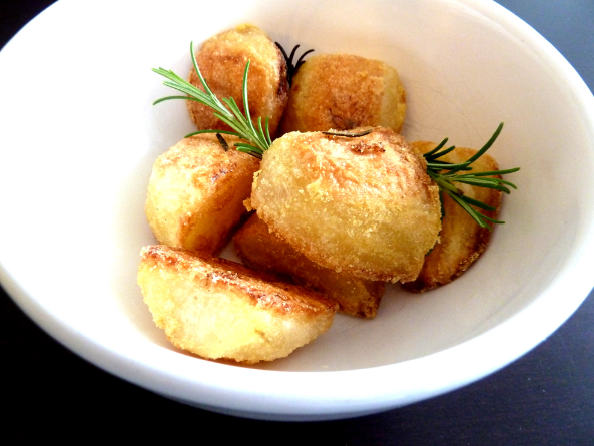
-
Gravy:
I normally make gravy from the drippings of whatever meat I'm cooking - I would stir in some flour, add some stock, some seasoning and call it a day.
Today - and only because I have the time and ingredients - I'm making gravy from scratch: roasted bones from previous meals, some carrots, onions and celery, and then when it's roasted, I've added some flour, tomato paste, and some stock that I made yesterday. I've added peppercorns and thyme for flavour.
I wouldn't normally bother, but as I'm intending on a few days of making meals that gravy would go with, it's worth it.
Once it's simmered down, I'll drain through a colander, and freeze using ice-cube trays.
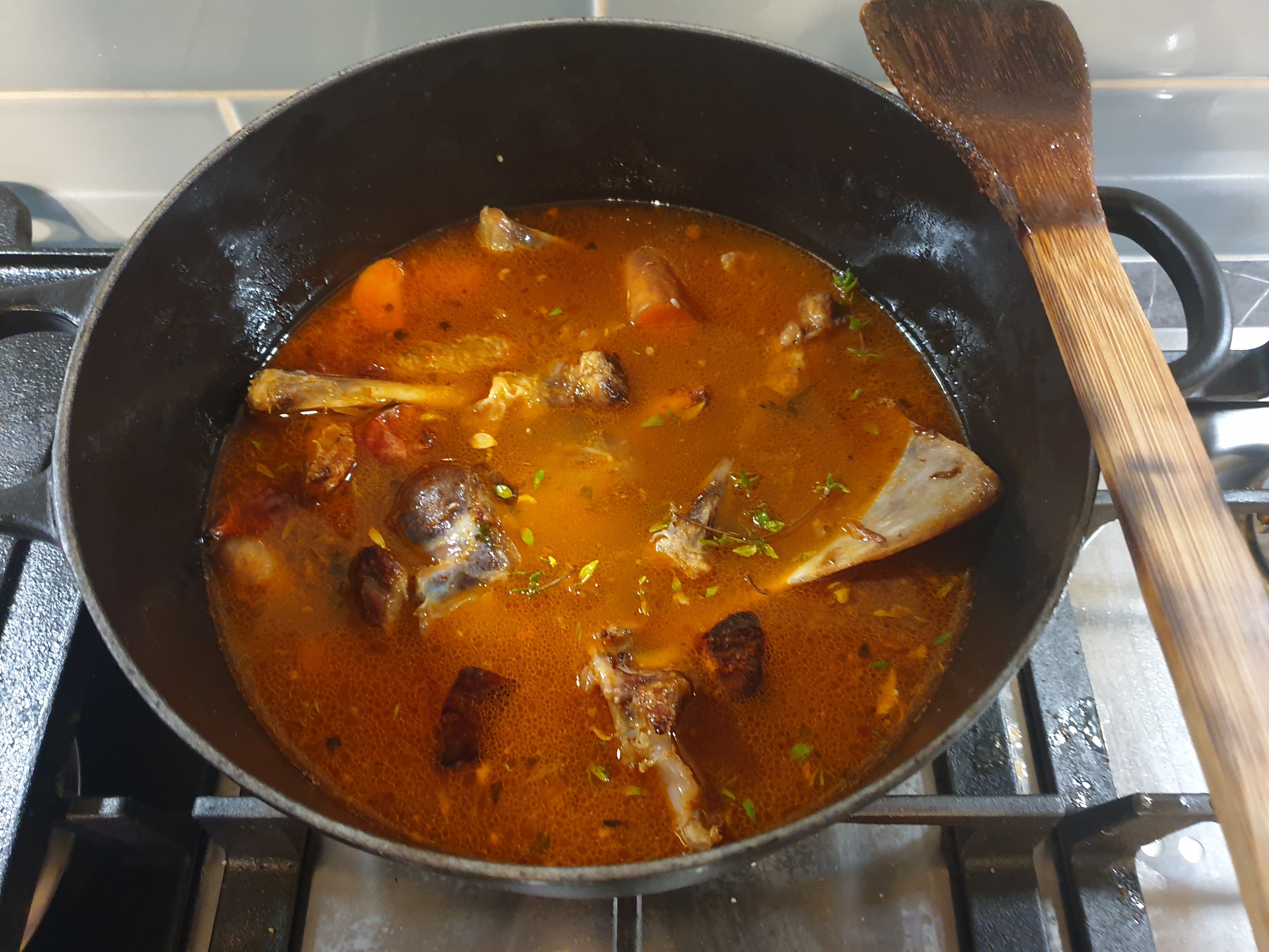
-
The full dinner (sort of, there was broccoli as well, but that's out of shot).
First recipe link is for the beef itself. "Topside" is the cut of beef sold in the UK as a "Beef Roasting Joint". It's pretty lean, so requires careful cooking (don't overcook it) and resting for at least 30 mins, and slicing thinly.
A sirloin rib-in joint is the king of beef roasts, but it is, to put it mildly, *prohibitively expensive*, you're looking at maybe £30-£40 for a 3 rib joint in the UK.
Topside Beef Roast
Topside Beef Roast Ingredients 1.5kg top roast of beef 2 tbsp olive oil 2 onions, peeled and roughly chopped 2 carrots, peeled and roughly chopped 2 sticks celery, roughly chopped 3 cloves garlic, unpeeled Mixed herbs (thyme, rosemary etc) Directions Preheat oven to 240c Put all of the veg...
Google Docs (docs.google.com)
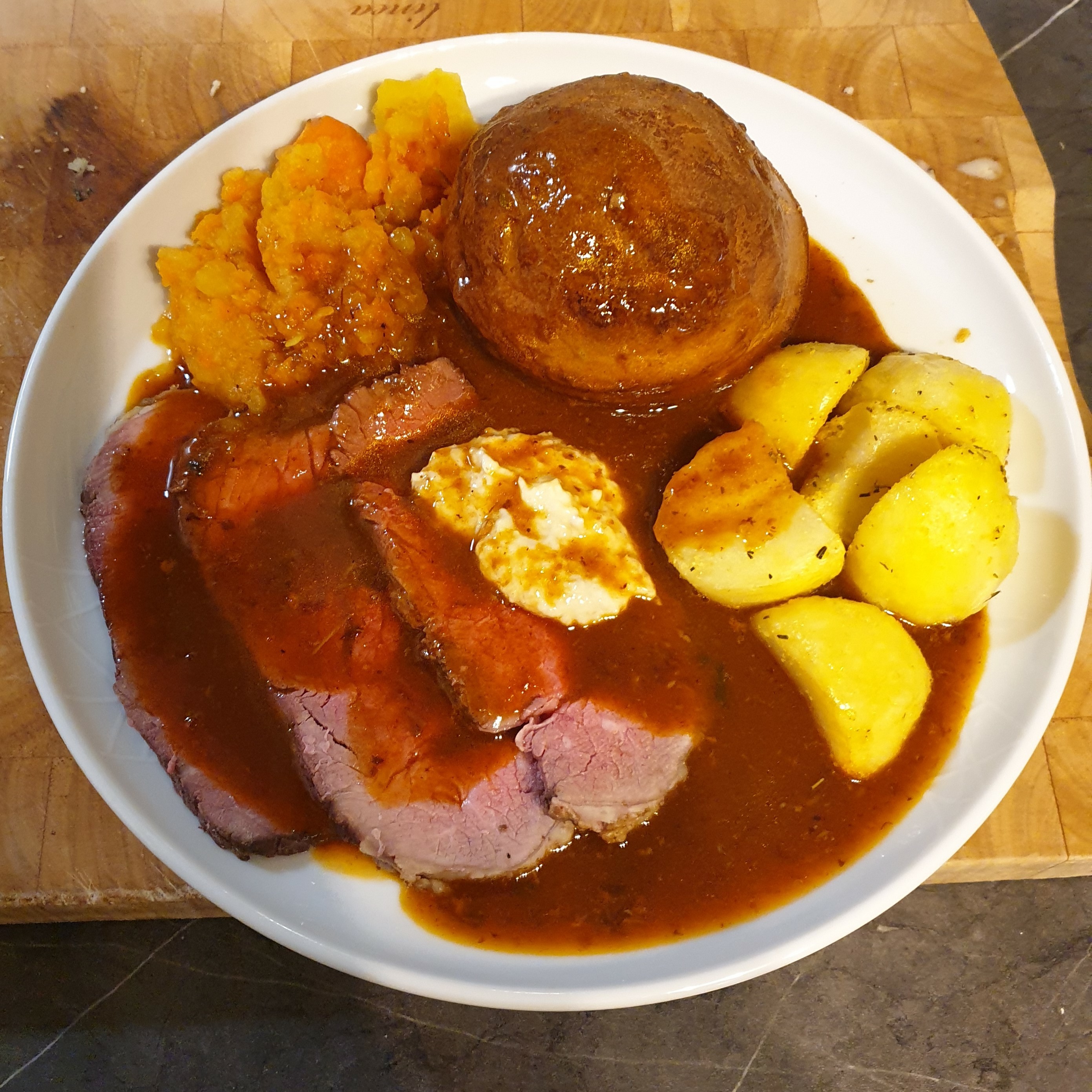
-
Recipes below for Carrot & Swede Mash and Yorkshire Puddings.
Carrot & Swede mash is a fairly standard and reasonably obvious autumn/winter dish using what is available, and is a "standard" side for roast beef.
Yorkshire puddings are a little more interesting - batter puddings became popular in, I believe, the 18th Century (I'm gonna do Toad In The Hole at some point in the next few days), and were - at the time - served as a starter, cooked underneath the meat so that the drippings fell into them.
They're pretty filling, and the idea was that one would fill their stomach with the savoury pudding "starter", to the extent that one would eat less of the roasted meat, which would then last longer through the week.
Over time, they evolved and ended up on the same plate as the meat, and have plenty of variations (serving the meal *inside* a very large yorkshire pudding is not at all unheard of, for instance).
(*Typically*, Yorkshire puddings are served with beef, but not with other meats like pork or poultry. I've an idea that this is due to seasonality, and the extra calories needed during winter when beef was more typically served. I won't die on that hill though)
Yorkshire Puddings
Yorkshire Puddings Ingredients 3 oz (75 g) plain flour 1 egg 3 fl oz (75 ml) milk 2 fl oz (55 ml) water 2 tablespoons oil. salt and pepper Directions Sift the flour into a bowl and make a well in the centre. Break the egg into it and beat, gradually incorporating the flour, and then beat in...
Google Docs (docs.google.com)
Swede & Carrot Mash
Swede & Carrot Mash Ingredients 1 carrot, peeled and chopped into 1/2 inch dice 1/2 swede, peeled and chopped into 1/2 dice salt and pepper Directions Cook the carrot and swede in boiling water for 20 minutes. Season with salt and lots of pepper, and mash together until smooth
Google Docs (docs.google.com)
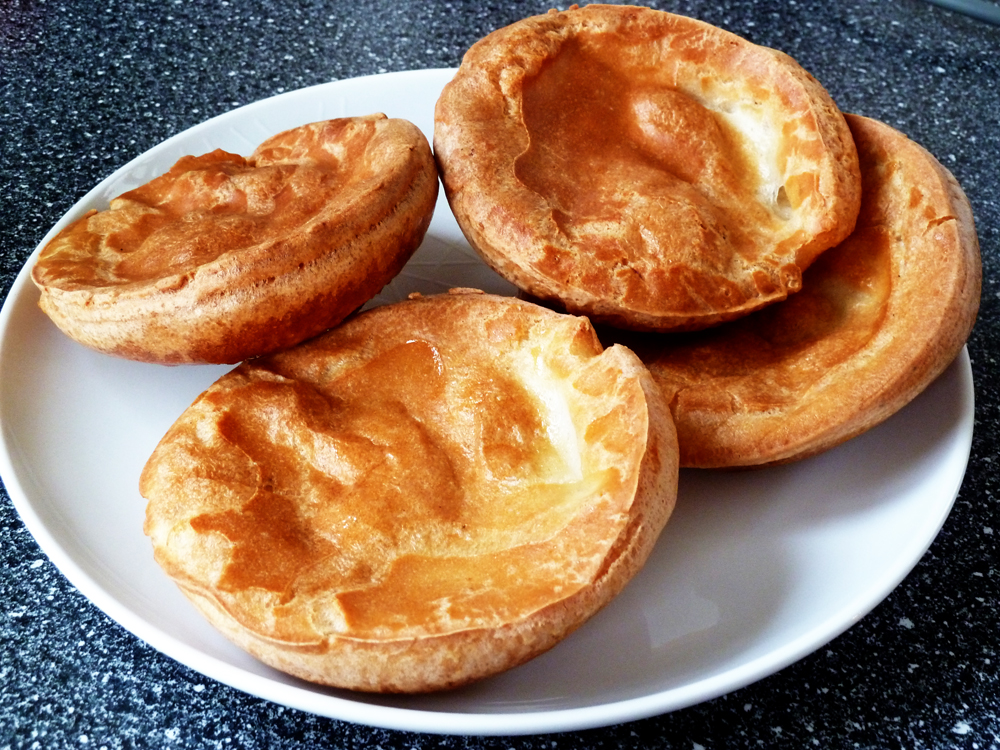
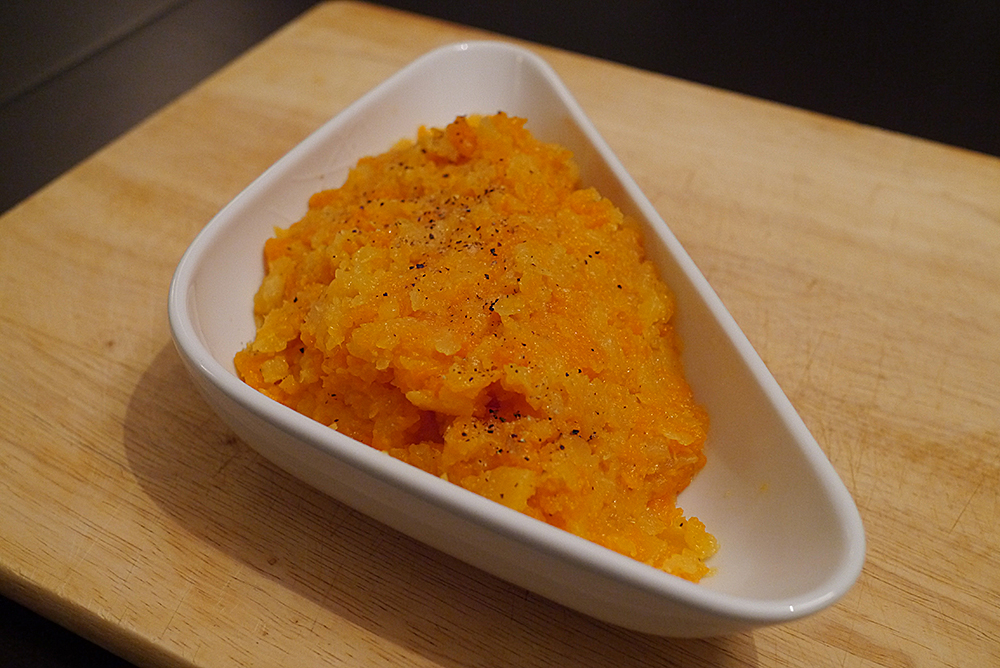
-
Brett Sheffield (he/him)replied to NeonSnake on last edited by
@neonsnake I wondered if you'd get to Yorkshire puddings.
Mum's family are from Yorkshire (Leeds), and a roast dinner was always served on a Yorkshire pudding the size of the plate - large, round and flat like a pancake. The meal is served on top, the gravy soaks into it and it is still, for all my foodie ways, one of the best meals on the planet.
When I first landed in London and walked into a Tesco I was baffled to see these small "Yorkshire puddings" like little cups being sold.
-
NeonSnakereplied to Brett Sheffield (he/him) on last edited by
@dentangle Yorkshire pudding is a thing of beauty. I don't *wholly* remember, but I'm pretty sure my own mum served with every roast, regardless of meat.
She generally made them small - like, I think she used a muffin tray to make them. A bit like the Aunt Bessie size, I guess.
I made them larger for the photo (it's a very old photo in the individual shot) for aesthetics, but I normally just use the biggest loaf tin I have
 - bigger the better, as far as I'm concerned
- bigger the better, as far as I'm concerned ...I'm gonna have to do toad in the hole next, aren't I?
-
Brett Sheffield (he/him)replied to NeonSnake on last edited by
@neonsnake I don't ever recall my grandmother or mother making yorkshire pudding in the oven. It was basically a pancake cooked in dripping, the same size as the plate.
My grandparents had lived through the Depression and post-war rationing, so licking the plate clean was expected. When I later went to live with my father he beat that out of me rather quickly. "Etiquette! If you don't know what it means, go look it up in the dictionary!"

-
NeonSnakereplied to Brett Sheffield (he/him) on last edited by
@dentangle I wonder if that's a difference between typical kitchens? From memory, we'd use the oven much more than the stove (don't hold me to that, though)
Heh. My parents were both 1946 babies (Nan and Grandad evidently having, uh, somewhat missed each other whilst separated during the War...), so I had a mix. I definitely had to finish everything on the plate, but also was expected to be, I dunno, polite and well-mannered about it.
-
Brett Sheffield (he/him)replied to NeonSnake on last edited by
@neonsnake I vaguely recall my grandfather explaining that traditionally the pudding would be cooked in the dripping tray, though they never did that. They'd sometimes use a big electric fry pan with a lid for cooking the roast, perhaps because it was cheaper than running the oven.
When asked what was for dinner, he joke all I'd get was a "walk round table, laddie".

-
NeonSnakereplied to Brett Sheffield (he/him) on last edited by
@dentangle Yeah, I don't *think* I remember it ever being cooked in a pan underneath, but that's apparently the origin - I'm guessing that was back in the "cook the meat in an open hearth" days?
-
Brett Sheffield (he/him)replied to NeonSnake on last edited by
@neonsnake I guess so.
Damn all this talk of roasts and puddings. Hungry now.
-
From about 3lbs of beef (1.4 kg) for a cost of just shy of £15, I got - initially - four portions of roast dinner, 2 adult and 2 kids size.
The next day, I put the leftovers in the freezer for half hour, and then ran about half through a meat slicer, on about 2mm. From this, I made 4 portions of roast beef sandwiches, served on baguettes with rocket (arugula) and horseradish. The rest - about 3/4 lb (350g) I diced very roughly for stew (I got 4 good sized adult portions from it)
I have a large number of recipes for "meat and barley" stews - the one linked below uses swede rather than potato, but they're all similar. Use a small amount of meat, and stretch it using barley, vegetables, and flavour it with stock and herbs.
Meat, used frugally, and padded out with vegetables, herbs, spice, and broth, served with bread, is what used to be know as "pottage", the famously stereotypical dish of British peasants. All of the various dishes - be it the below, or Irish stew, or Scotch broth, or the others, are (as best as I can tell, and I'd love others' opinions) variants on pottage that have survived to modern day.
The one I made (beef with carrots, onions, potato and beef, with the barley) is known as "lobscouse", is a regional variant from Liverpool, and is why Liverpudlians are known as "Scousers".
Purists will say that it *has* to have carrot, potato and onion. I'm trying not to stray *too far* from the original dishes, but I also believe that as a "thrift" meal, adding swede instead of/as well as potato does not render it inadmissible.
I probably added more barley than is traditional, but, uh, I really like barley (some recipes don't use it at all, just the meat and vegetables)
During the cooking, if using potato but not, one would mash the potato a little once it's softened, and that would add as the thickener.
It's worth noting that as well as herbs like thyme, marjoram or rosemary - which would be available in many a kitchen garden, that it would be seasoned *heavily* with pepper (often white pepper, not black), which would give it a certain amount of heat. Without getting into the whole "spice" conversation right now, we did use more pepper than I think is generally understood, given that's what we had access to for everyday meals.
Beef & Barley Stew
Beef & Barley Stew Ingredients 60g pearl barley 250g leftover cooked beef, in 1/2inch chunks 1 tbsp olive oil 1 onion, finely chopped 2 cloves garlic, crushed 1 carrot, chopped roughly 100g swede, chopped roughly 700ml meat stock 1 tsp thyme/rosemary salt and pepper Directions Put the barley...
Google Docs (docs.google.com)
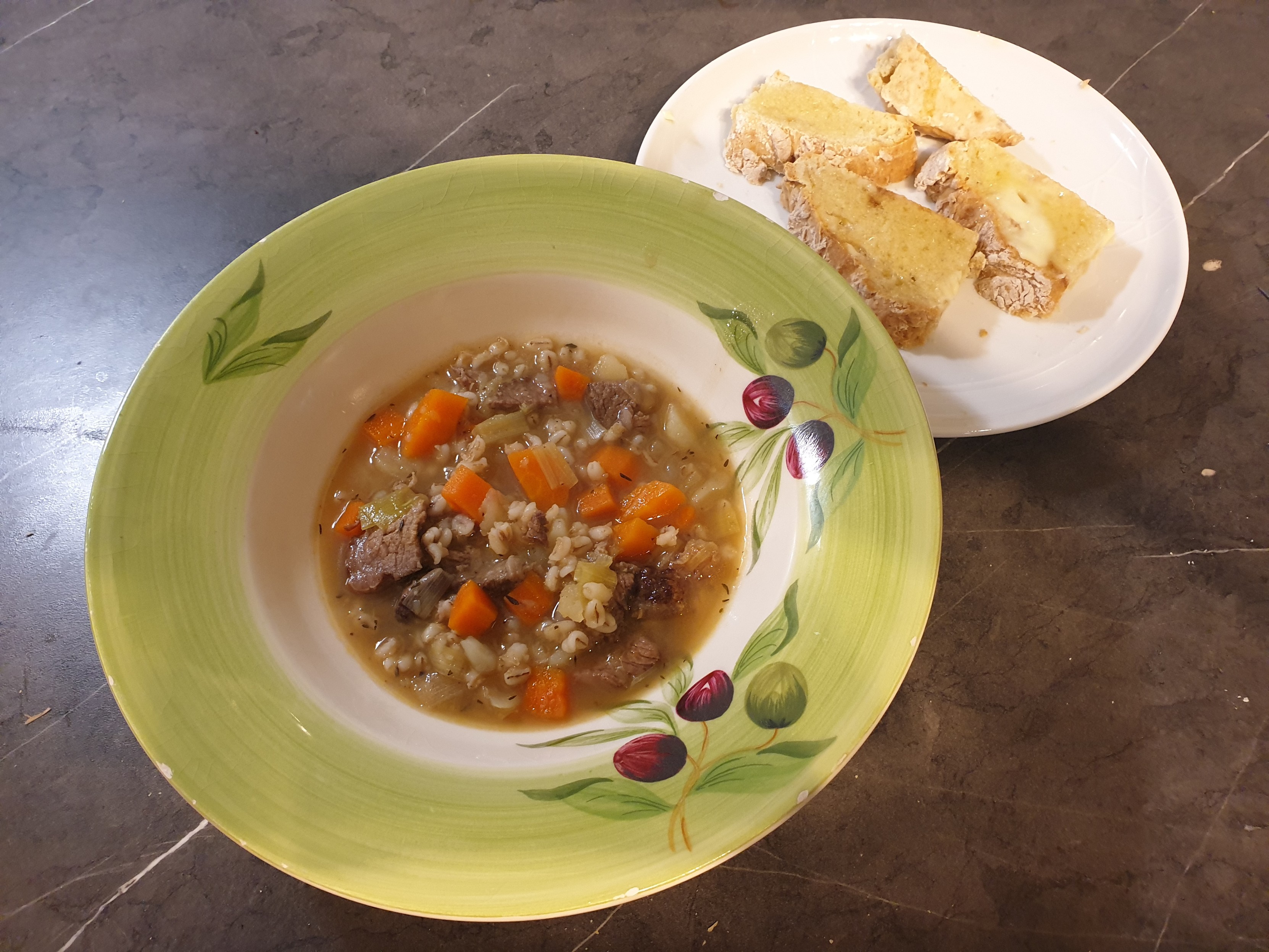
-
Brett Sheffield (he/him)replied to Brett Sheffield (he/him) on last edited by
@neonsnake We're having roast chicken cuisses with chips tonight. I have tried without success to convince my other half that I should be allowed to serve this on a yorkshire pudding with gravy

-
Toad In The Hole with Onion Gravy
Having spoken about Yorkshire Puddings yesterday, and with a half-dozen sausages on hand, I decided to make Toad In The Hole.
Again, it's not a particular mythical dish, with origins lost in the mists of time - it can be dated to roughly the late 18th Century, and is another way of stretching a small amount of meat.
Typically nowadays we use sausages, but all sorts of meat can be used - for instance, a cheap cut of beef, diced, was reasonably popular at the time.
I also made onion gravy - if you're vegan/vegetarian and miss gravy, I thoroughly recommend this. Whilst I've stuck with traditional ingredients this time, any umami that you want to add will work (Maggi liquid seasoning is a good one).
Other than the gravy, I served with swede & carrot mash as I had leftover swede, and peas to get some green on the plate.
Vegan sausages work in this very well.
(I've not personally made batter without milk and eggs, but I see no reason why it wouldn't be possible with something like oak milk and aquafaba)
Recipe links below:
Toad In The Hole
Toad In The Hole Ingredients 6 pork sausages 1 tablespoon groundnut oil 75g plain flour 1 large egg 75ml semi-skimmed milk 55ml water salt and freshly milled black pepper Directions Preheat oven to 220c Sieve the flour into a large bowl. Make a well in the centre, break the egg into it and ...
Google Docs (docs.google.com)
Onion Gravy
Toad In The Hole Ingredients 225g onions, peeled and sliced 2 tsp groundnut 1 tsp golden caster sugar 500ml vegetable stock 1 dsp Worcestershire sauce 1 tsp mustard powder 1 dsp plain flour salt and black pepper Directions Preheat oven to 220c Place the onions in a bowl and lightly ...
Google Docs (docs.google.com)
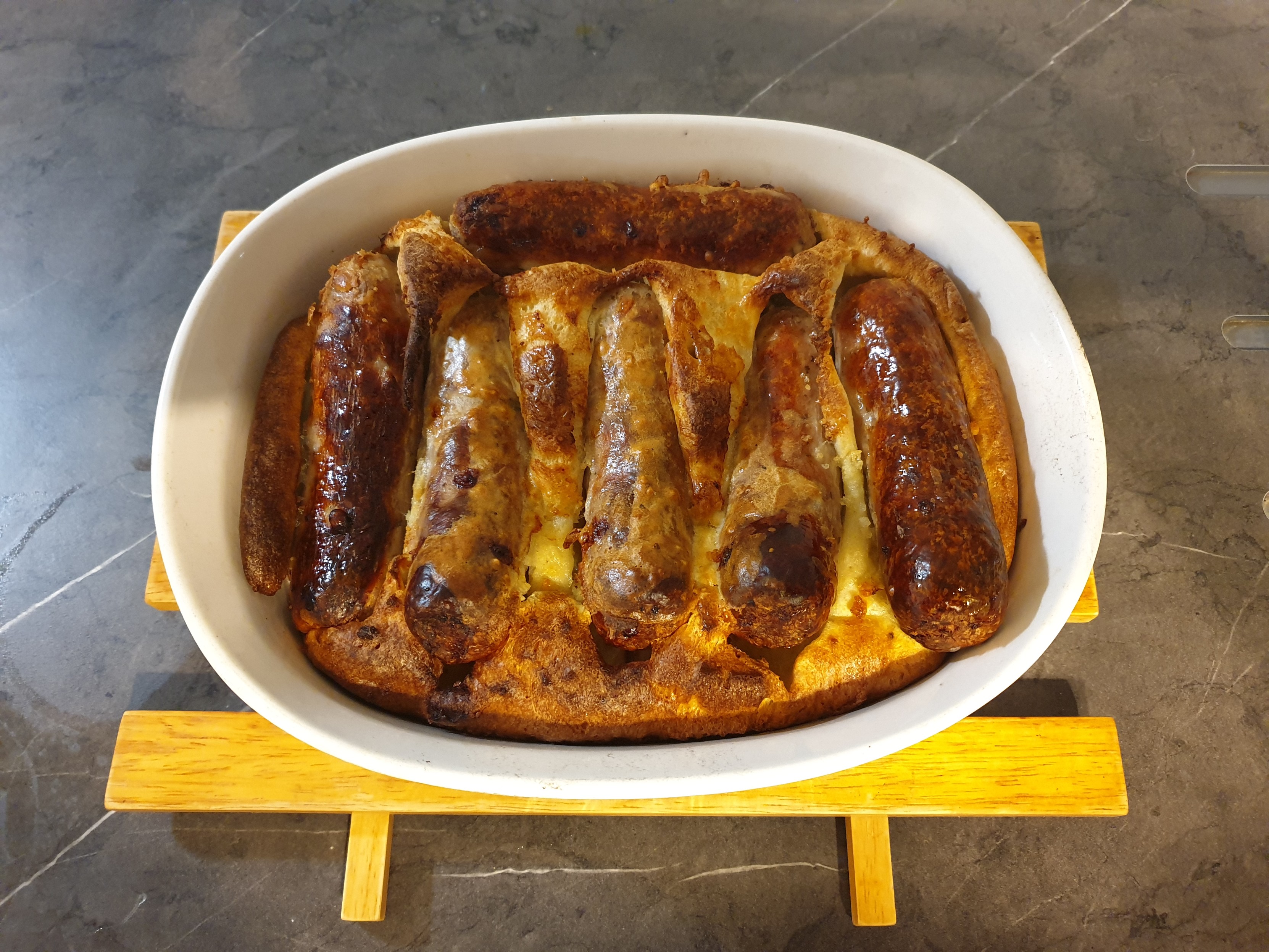
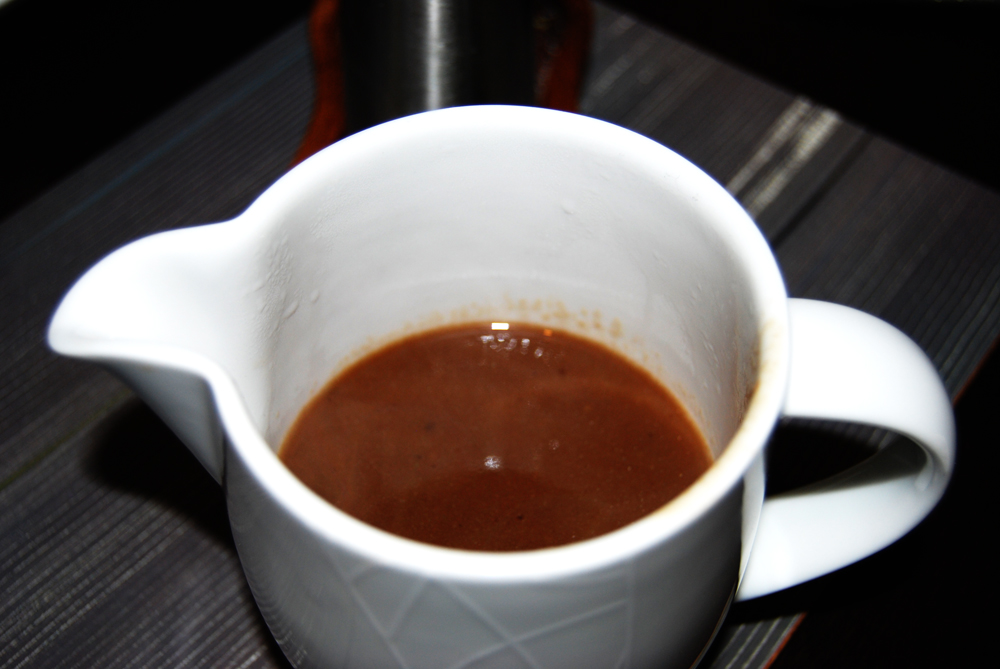
-
Ok, pies!
Pies are, of course, a quintessentially British invention. Apparently, 75% of the British population eat a pie once a month or more. Pies are very much associated with the working classes, and indeed a common football chant dating from the 1890s includes "who ate all the pies?" aimed at those deemed to be overweight through poor diet.
So British, in fact, that we, uh, had to send someone to Egypt in something like the 10th Century BC to invent them.
*cough*
Tongue now removed from cheek:
The earliest record we have of pies is in ancient Egypt, a pastry casing around a filling of honey, grains, and dried fruit or meat.
Records from 500 BC Greece and Rome have similar recipes.
Often the pastry casing was not intended to be consumed, but was intended to keep the filling fresh by protecting it from the air, and would be discarded. Think of it like a air-tight tupperware.
Over time, and as we get into the Middle Ages, the pie evolved. The casing became part of the meal itself, and the distinction between savoury and sweet became more distinct
Pies became on one hand, a way of showing off at expensive banquets ("four and twenty blackbirds"), but also still a way of stretching small amounts of meat for portable lunches.
I made here, a chicken and ham pie. Pie fillings have some regionality, this would be from Cornwall, roughly.
The meats were both cooked and leftover from previous meals. The pie filling is flavoured strongly with nutmeg and parsley, both commonly available, not expensive and by no means the exclusive province of the rich, as I want to start demonstrating the incorporation of herbs and spices into our meals. This is an easy start without suddenly moving from pottage to full-fledged spice mixes.
Chicken & Ham Pie
Chicken & Ham Pie Ingredients 30g butter (plus more for buttering the pie dishes) 1 leek, cleaned and sliced in half moons 30g flour 225ml milk 1 tsp mustard 150g cooked chicken, shredded 75g cooked ham, shredded or cubed 1 tbsp fresh parsley, chopped 1/4 nutmeg, grated 250g puff pastry (ready...
Google Docs (docs.google.com)
(I made it with mashed potatoes and peas, and leftover onion gravy that I made a couple nights back. I made it using a few of those rectangular tinfoil dishes to get the shape/portion size right, and because they're easy to take to other people - I got 4 portions from the recipe, and each "tin-sized" portion could arguably serve two people!)
I should and will note that "pies" are one of those dishes, like bread, that seems to appear in most cuisines that I know of across the world (in the sense of "a filling wrapped in a flour-based casing"), but I'm concentrating on British food right now.
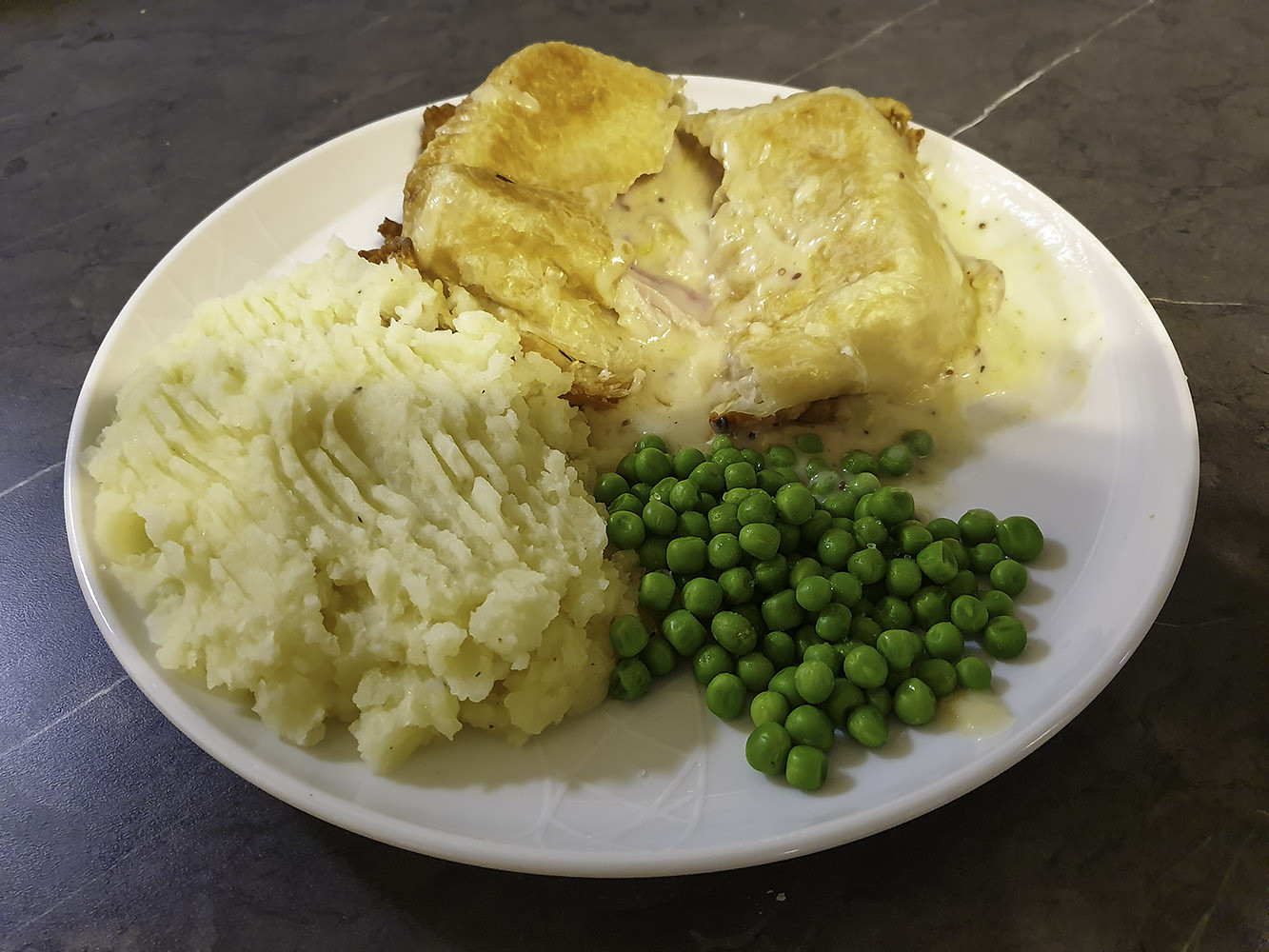
-
At the same time, I'm also doing some preserving, based on some older recipes I've found.
This one is salt beef, slightly distinct from my normal salt beef in that it's a drycure. Apparently it was popularly known as ""Spiced Beef" or "Huntsman's Beef", and was a breakfast dish eaten by people hunting away from home.
Now, I'm a little uncertain about the veracity of this. I regularly make salt beef, and my recipe is a *wetcure* of salt-petre, salt, sugar, juniper berries, black pepper and allspice (ie. the meat is covered by water with the spices mixed in, and then is cooked after a week or so in the cure)
This time, I'm attempting as mentioned, a drycure - the spices are exactly the same, just in slightly different proportions.
What I'm struggling to do is verify that this is genuinely a British dish - this isn't to ignore influences, at all, but normally I can at least have a stab at the history.
Here, I *think* this might primarily be a Pakistani dish, as most sources for "Hunters' Beef" bring up a version spiced with cumin, cinnamon and other Pakistani spices (and are labelled as "Pakistani Hunter's Beef"), so I'm unsure.
Obviously, with our history in the UK, colonialism plays a huge part, so it's hard to tell which way the "exchange" went, when it comes to food. Whilst I very much appreciate the "exchange", I also don't like to be able to fully understand the history, and on this one I'm not sure I do.
Either way, I'm going to give it a go. This needs to cure for a week or so, being turned every day, after which I will boil for a couple hours before slicing. The cure should mean that the cooked slices will last for a good few weeks in the fridge (as, in earlier times, they would last if taken out on the hunt)
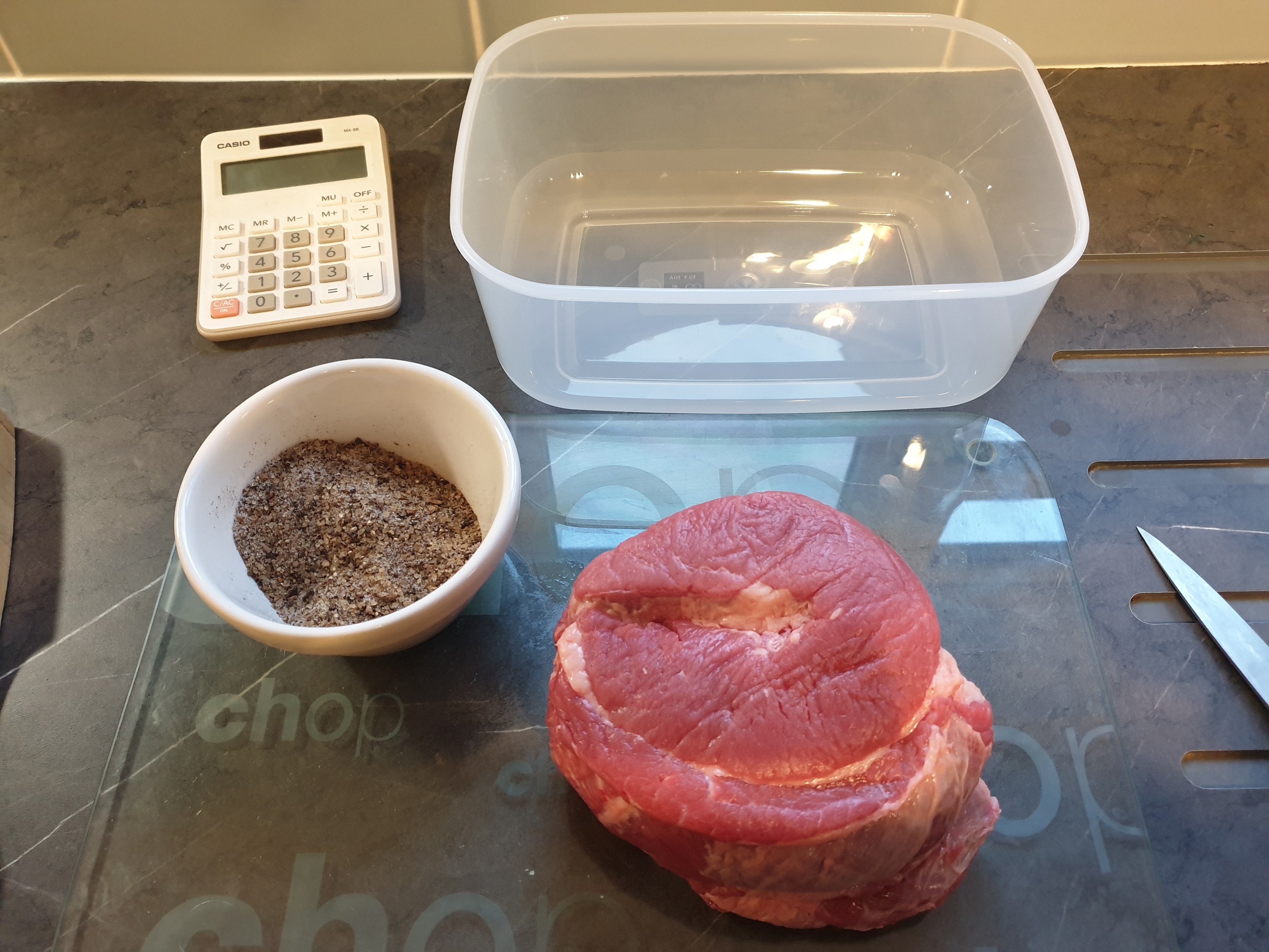
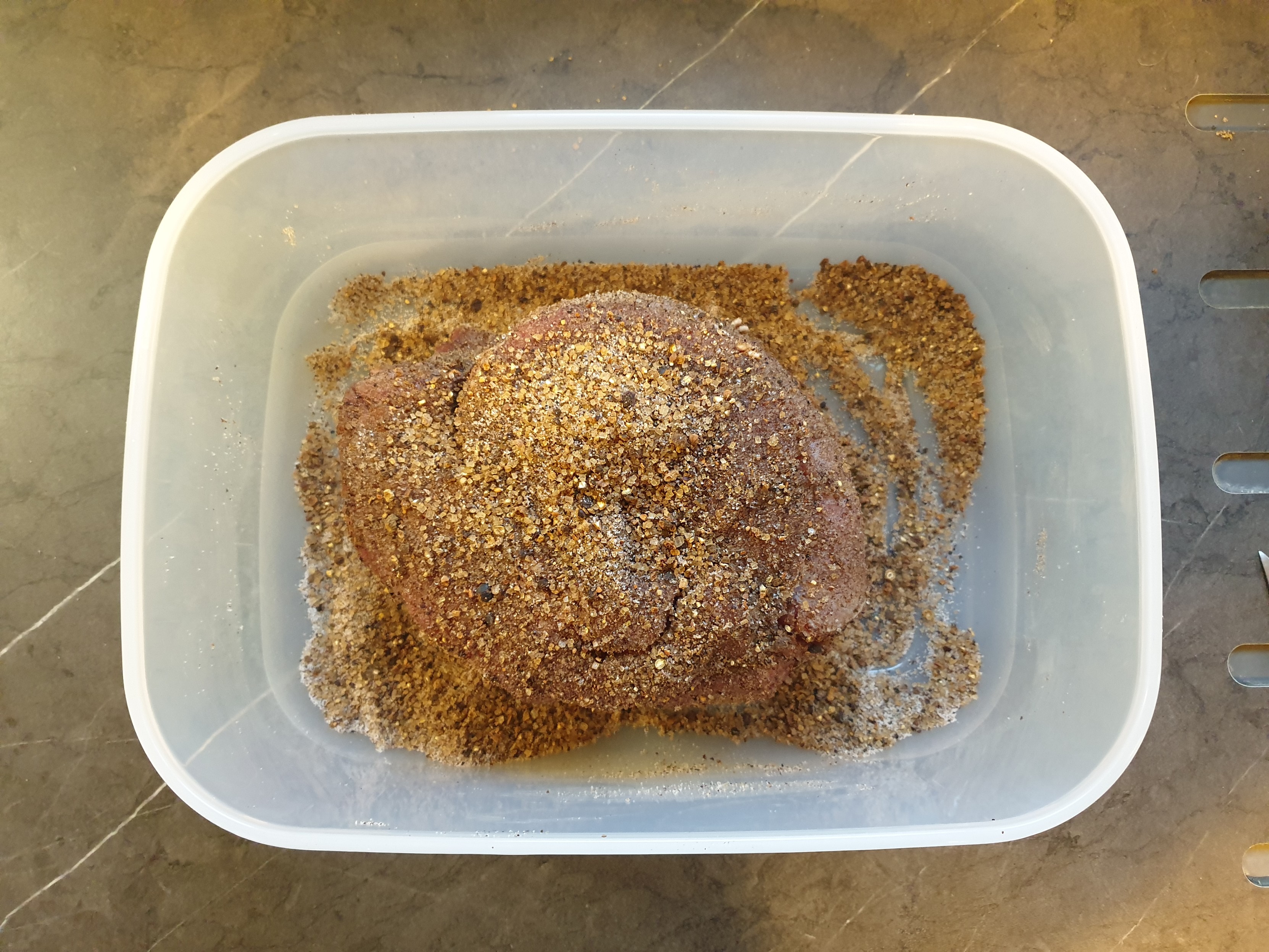
-
After nine days of curing, I'm ready to cook this.
I've taken a small amount off for tonight's dinner, which I'm going to cook separately, then re-tied the rest with kitchen string to hold the shape. I've rinsed the cure off, and it's now in the oven at 150c, in a covered casserole, with a cup of water, for 3 hours. I'll turn at 1 hr 30, but I'm hoping 3 hours should do it.
When I've done salt beef before, I've cooked it entirely submerged in liquid, so it will be interesting to see how this comes out with only a very small amount of liquid.
(I had a bit of a panic when I found the previous post and it said "6 days ago". Definite benefits of being able to check the meta-data on my earlier photo, plus checking back through my bullet journal to confirm that I originally put it in the cure on the 10th!)
